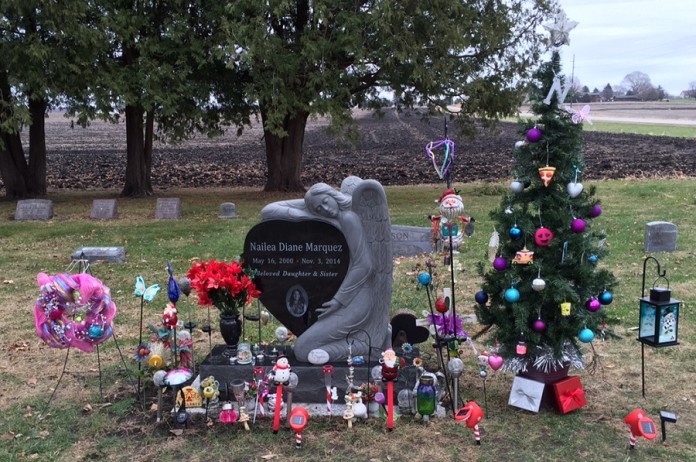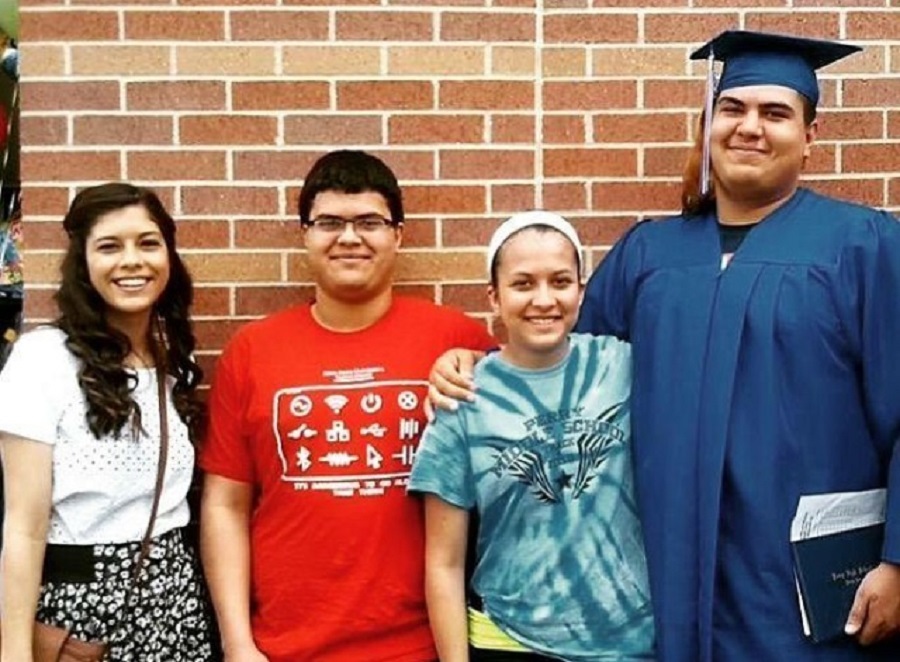
 The Marquez family of Perry was one of about 150 central Iowa families to receive holiday Cheer Boxes this month from volunteers with the Amanda the Panda program.
The Marquez family of Perry was one of about 150 central Iowa families to receive holiday Cheer Boxes this month from volunteers with the Amanda the Panda program.
The non-profit program delivers boxes containing 12 individually wrapped gifts to be opened throughout December to families experiencing one of their first holiday seasons following the death of a loved one.
The Cheer Boxes were sent to families who have been supported by Amanda the Panda’s programs throughout the year and to families nominated by community members. Nearly 250 volunteers, including two former Cheer Box recipients, devoted about 200 hours preparing and delivering the wrapped packages.

Angie Marquez, 40, says Amanda the Panda has made a world of difference in helping her family through their grief journey since the November 2014 death of her daughter, Nailea.
Marquez credits Amanda the Panda with encouraging her family to start a new tradition this year that honors and celebrates Nailea’s memory. The family put up a six-foot, solar-lit Christmas tree and stocking at Nailea’s grave in Violet Hill Cemetery. They can be seen by passersby along Park Street in Perry.
Nailea’s death was one of a handful of suicides that hit the Perry community hard in 2014. Amanda the Panda staff members held two Day of Hope and Healing sessions for teens grieving at Perry High School.
PHS students said they were shocked by Nailea’s because “Nae nae” was known for her smile and for making people laugh. She was the kind of person who always put others first, they said. An hour before taking her own life, she comforted a friend and encouraged him through his struggles.
Marquez is passionate about letting people know those who seem the happiest might be struggling with mental illness and those who are grieving are not alone.
“My big fear is that people will forget Nailea,” she said. “The Cheer Box showed that Amanda the Panda remembers. It shows they don’t forget us, and they don’t forget Nailea. I can get through this because I’ve learned from the stories I’ve heard through Amanda the Panda participants and volunteers. I can get through this because I know I’m not alone.”
Amanda the Panda has been helping children and families for 35 years grieve after the death of a loved one. They use innovative, age-appropriate services that give hope and healing and thanks to generous donors, year-long support is offered at no cost to participants.
With the assistance of hundreds of volunteers, Amanda the Panda serves nearly 1,200 people annually. Since its founding in 1980, about 35,000 children, teens and adults have been served through Amanda the Panda’s bereavement camp, support groups, family nights and community outreach.
Although this Christmas’ Cheer Boxes have already been delivered, financial donations are already being accepted to support the program next year.
Amanda the Panda’s free Winter Support Group begins Jan. 11 and meets weekly from 5:30 p.m.-7:30 p.m. through Feb. 29. Dinner and childcare for babies through preschoolers are included. For more information, visit the Amanda the Panda website or call 515-223-HUGS.

8 Common Myths about Teen Suicide
Myth #1- Most teens who threaten suicide are just looking for attention.
People who talk of suicide needs to be listened to carefully, even if they have threatened suicide before and never followed through. Mentioning suicide is a sign they are in some kind of pain.
Myth #2 -Anyone who completes suicide is selfish. They should have thought about how their actions would hurt other people.
Suicidal people feel both helpless and hopeless, often seeing the act of suicide as the only way out and feeling they are only a burden to their family. Expecting a suicidal brain to be able to think clearly is like expecting someone with two broken legs to run a race.
Myth #3- The most common reason for teens to kill themselves is bullying.
Bullying can be a significant factor in some suicides, but we must remember it is just one piece of the puzzle. Usually multiple factors were involved in most suicides. Most common is mental health issues.
Myth #4-All teens who die from suicide acted depressed before, and people just missed the signs.
Sometimes there are no obvious signs, and suicidal teens may even seem happy or calm just hours before they take their own life. It is easy to see warning signs when looking back that were not obvious before.
Myth #5-Suicidal teens always think about exactly how they are going to complete suicide and plan it all out.
The decision to complete suicide can be an impulsive one, especially if a traumatic event happened.
Myth #6-Someone with a specific plan isn’t any more likely to die from suicide than someone just thinking about it.
If a suicidal person has a specific plan, he or she is at much greater risk of following through. A mental health professional must always be contacted immediately if a teen expresses a specific plan.
Myth #7-There is always a note explaining why.
Not always.
Myth #8-If a student dies from suicide shortly after another student died from suicide, then it was a copycat.
This occurs only in rare cases where another student was already suicidal and had serious issues. Suicides are not contagious. No one suddenly becomes suicidal after hearing about or witnessing a suicide. That would be like saying if one neighbor died from cancer and another neighbor died from the same type of cancer in the same week, one must have caused the other to happen.
















